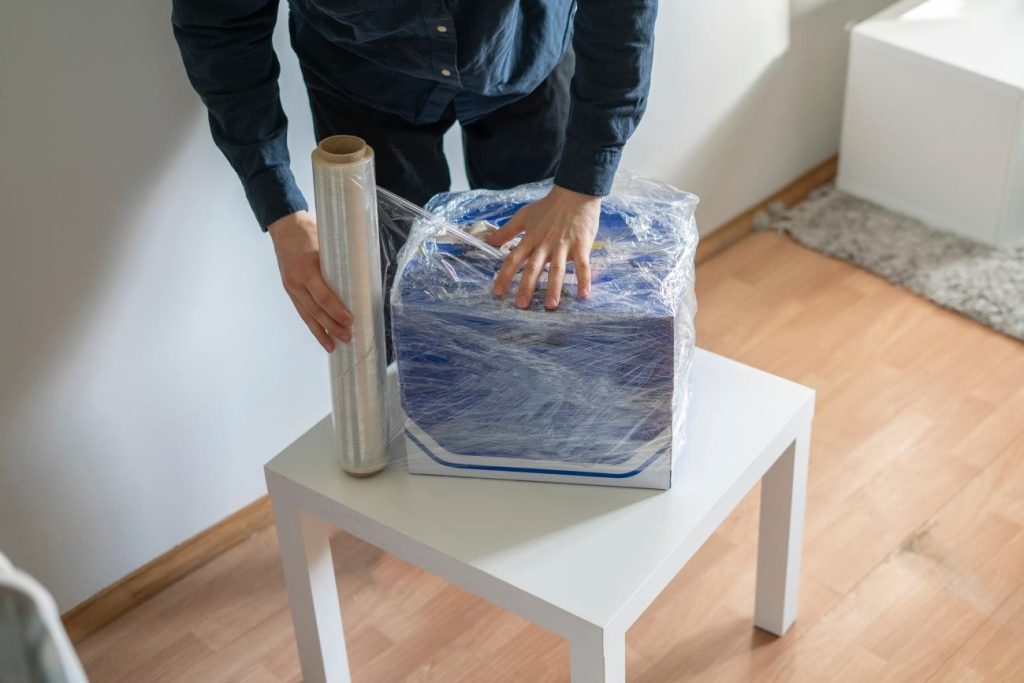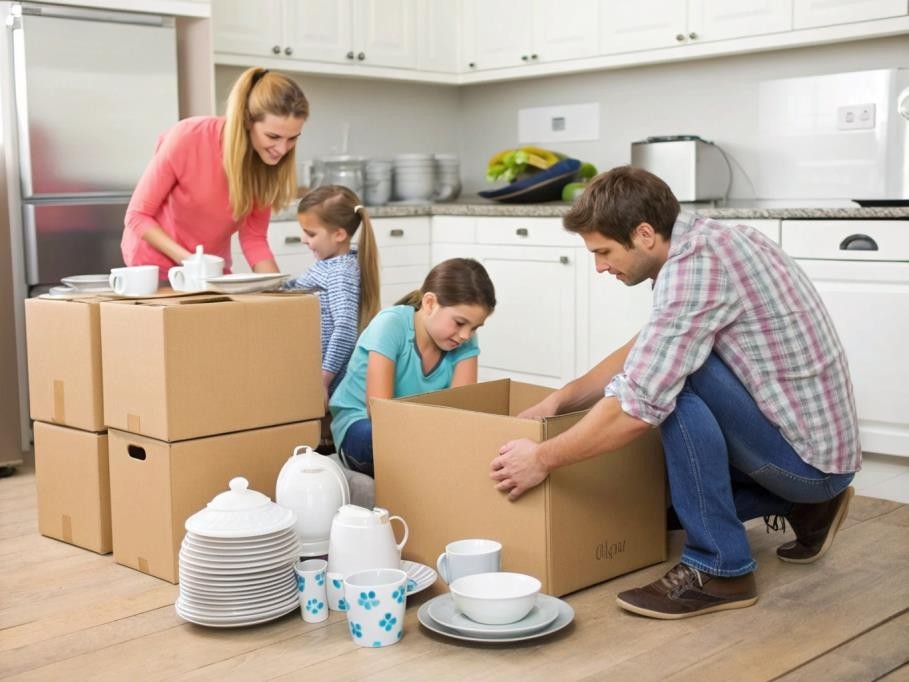Moving interstate isn’t just about putting your belongings into boxes and hitting the highway. It’s a life event that demands organisation, planning, and foresight—especially in 2025 when relocation trends are changing due to remote work, lifestyle choices, and rising moving costs.
Whether you’re moving for a new job, better lifestyle, or family reasons, the truth is simple: a detailed checklist is your best moving partner. This guide, curated from over two decades of industry experience, will walk you through every step you need to take—from 8 weeks before your move to the day you settle into your new home.
Why You Need an Interstate Moving Checklist in 2025
Interstate moves are complex because they involve not just transportation, but also timing, paperwork, utilities, insurance, and lifestyle adjustments. A checklist ensures:
- You don’t forget critical tasks (like notifying authorities or redirecting mail).
- You save money by planning smart (choosing the best time to move can cut costs by 20–30%).
- You reduce stress by breaking down the move into smaller, achievable steps.
With costs of interstate removalists in Australia averaging $3,500–$5,000 for a 3-bedroom house in 2025, planning ahead can make the difference between a smooth move and a financial headache.
8 Weeks Before the Move: Planning Stage

1. Create a Moving Binder or Digital Folder
Start a dedicated folder—physical or digital—for everything related to your move: contracts, quotes, receipts, and to-do lists. In 2025, many moving companies also provide online dashboards for customers—take advantage of those.
2. Research and Book Your Interstate Removalists
- Compare at least 3–5 quotes from reputable companies.
- Check if they provide backloading options (cheaper, shared truck space).
- Double-check your insurance, as the basic plan often doesn’t cover expensive or
fragile belongings.
3. Budget Your Move
Account for:
- Removalist costs
- Temporary accommodation (if required)
- Packing materials
- Car transport (if you’re not driving it yourself)
- Pet relocation fees
4. Notify Your Landlord (If Renting)
Give notice and check lease agreements for cleaning requirements or penalties.
6 Weeks Before the Move: Decluttering C Organising

5. Declutter Room by Room
Moving interstate is expensive—the less you carry, the less you pay. Use the “Keep, Sell, Donate, Discard” method:
- Sell items online through platforms like Gumtree or Facebook Marketplace.
- Donate to local charities.
- Recycle electronics responsibly.
6. Start Using Up Pantry C Freezer Items
Plan meals around what you already have. Frozen goods rarely survive long interstate trips.
7. Organise Important Documents
Collect passports, birth certificates, property deeds, and medical records in one safe, travel-ready file.
4 Weeks Before the Move: Packing C Paperwork

8. Begin Packing Non-Essentials
Packing non-essentials: start with items you don’t use daily, such as: Start with items you don’t use daily, such as Start with items you don’t use daily: seasonal clothing, décor, extra linens, and books. Use sturdy boxes, bubble wrap, and clear labelling.
9. Label for Easy Unpacking
Mark boxes with:
- Room name (Kitchen, Bedroom 1, etc.)
- Fragile / Handle with care
- Priority (Unpack first, later)
10. Update Your Address
Notify:
- Australia Post (set up mail redirection)
- Banks, credit cards, and insurance providers
- Utility providers
- Workplace and schools
- Subscriptions (magazines, online shopping accounts)
11. Transfer Utilities
Arrange to have your utilities switched off at your current home and set up at your new place.
- Electricity
- Gas
- Water
- Internet C Pay TV
3 Weeks Before the Move: The Countdown Begins

12. Arrange Car and Pet Transport
- Car transport: Professional services cost around $1,000–$1,500 depending on distance.
- Pets: Use licensed pet relocation companies. Book vet check-ups, vaccinations, and obtain travel certificates.
13. Notify Government Agencies
Update details with:
- Australian Taxation Office (ATO)
- Medicare
- Centrelink (if applicable)
- MyGov (in 2025, the Address Sync Tool makes this easier by auto-updating Centrelink, Medicare, and Child Support once verified).
14. Back Up Digital Files
Save important documents and photos on the cloud or an external hard drive.
2 Weeks Before the Move: Getting Hands-On

15. Pack Essentials Box
Prepare a “Day 1 Box” with:
- Toiletries
- Basic kitchenware (kettle, mugs, plates)
- Chargers C power boards
- Bed linens
- A few changes of clothes
That way, you won’t be stuck opening box after box just to track down a simple item like your toothbrush.
16. Service Your Car (If Driving Interstate)
Ensure it’s roadworthy and ready for long-distance travel.
17. Plan for Kids and Pets
Arrange care for moving day. Keeping them occupied reduces stress for everyone.
1 Week Before the Move: Final Preparations

18. Confirm Bookings with Removalists
Double-check:
- Dates and times
- Payment terms
- Insurance coverage
19. Finish Packing Most Items
Keep only daily essentials unpacked.
20. Clean and Prepare Property
- Arrange professional cleaning if required by your lease.
- Defrost the fridge/freezer 24–48 hours before moving day.
Moving Day

21. Be Present and Organised
- Supervise movers.
- Do a final walkthrough of your old property.
- Check cupboards, garages, and outdoor areas.
22. Keep Important Items With You
Keep your essentials—important papers, valuables, and your first-day kit—safe with you during the move.
23. Meter Readings C Keys
Note down the last utility readings and pass the keys on to your landlord, property manager, or new owners.
After the Move: Settling In
24. Unpack Smartly
- Start with essentials: kitchen, bedrooms, and bathroom.
- Leave non-essentials for later.
25. Register Locally
- Enrol kids in school.
- Find a local GP and dentist.
- Update your address on the electoral roll.
26. Explore Your New Area
Take time to get familiar with your neighbourhood—shops, parks, transport, and community centers.
What’s Different About Moving Interstate in 2025?
Moving across state lines has always been a big deal, but in 2025 the landscape looks a little different. Lifestyle changes, technology upgrades, and rising costs are reshaping how Australians approach their interstate moves. Here are the shifts you’ll want to prepare for this year:
- The Remote Work Lifestyle
A growing number of Australians are leaving big cities in favour of regional hubs. Thanks to flexible work arrangements, families and professionals can now trade high rents and traffic for bigger homes and a calmer pace of life. If remote work is on your radar, make sure your new location has solid internet coverage and, ideally, a nearby coworking space to keep you connected and productive.
- A Push for Greener Moves
Sustainability has stepped into the spotlight. Many removalist companies are responding by offering reusable crates, eco-friendly packaging, and trucks designed to cut down on
fuel use. Opting for these services not only helps the planet but also gives your move a more responsible, forward-thinking edge.
- Smarter Address Updates
Gone are the days of juggling multiple agencies just to update your details. With the new MyGov account, a single update can refresh your information across
Centrelink, Medicare, and Child Support in one go. It’s a simple improvement, but it saves
time, reduces paperwork, and makes settling into your new home smoother.
- Timing Matters More Than Ever
Costs for interstate moves have risen, largely due to fuel surcharges and increased demand. Peak moving season—December and January—can see prices jump by up to 30%. To stretch your budget further, book a mid-week or mid-month move. Not only are rates often lower, but removalists usually have more flexibility in their schedules.
Sample Timeline at a Glance
| Timeline | Tasks |
| 8 Weeks Before | Book movers, budget, organise documents |
| 6 Weeks Before | Declutter, start using pantry items |
| 4 Weeks Before | Pack non-essentials, update address, transfer utilities |
| 3 Weeks Before | Arrange car/pet transport, update MyGov C ATO |
| 2 Weeks Before | Pack essentials box, service car, plan kids/pets |
| 1 Week Before | Confirm movers, finish packing, defrost fridge |
| Moving Day | Supervise movers, carry essentials, hand over keys |
| After the Move | Unpack smartly, register locally, explore new area |
Moving interstate in 2025 doesn’t have to be overwhelming. With the right checklist, planning, and professional support, you can turn a stressful relocation into a smooth transition. The key is to start early, stay organised, and adapt to modern tools and services that make moving simpler.
Remember—moving is not just about shifting boxes, it’s about starting a new chapter of
your life. Do it with clarity, confidence, and a well-prepared plan.
